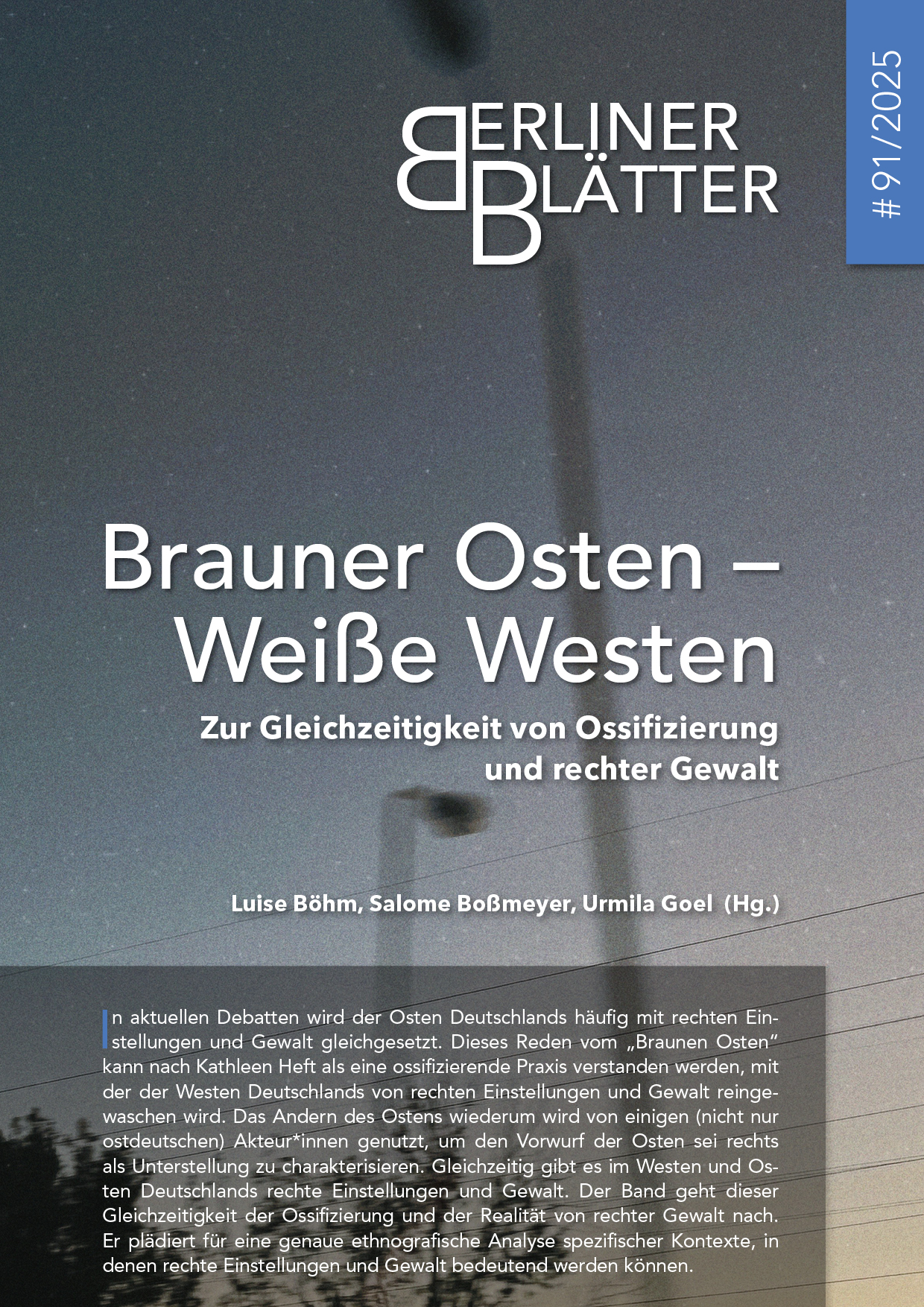"Brown/dark East" and Berliner Blätter
Reinhardtsdorf-Schöna as an example
DOI:
https://doi.org/10.60789/911181Keywords:
Eastern Germany, Saxony, right-wing extremism, village, conspiracy narrativeAbstract
Reinhardtsdorf-Schöna is a municipality in the district of Sächsische Schweiz-Osterzgebirge. It was subject to nationwide media attention, especially in 2004/05. At that time, the NPD (National Democratic Party of Germany) could achieve election results of up to 25.2 percent - partly because a local craftsman and municipal councilor transfered from an independent voters' association to the NPD. As a result the votes for him doubled compared to the previous election. In German debates about the (far) right, the town thus became a temporary superlative and symbol of right-wing strongholds. In 2005/06 the municipality also attracted the interest of an excursion by students of European Ethnology at Humboldt University in Berlin. The researchers asked for explanations for the right-wing voter preference and presented the research results in a special issue of the Berliner Blätter (2007). The volume can be read as an early example of research engagement with the right-wing in Eastern Germany as well as qualitative research on right-wing extremism. The example of Reinhardtsdorf-Schöna is ultimately also instructive for the currently discussed phenomena of conspiracy narratives and appropriations of the discourse of the "Brown/dark East". This reveals the normalization of right-wing extremist positions. Furthermore, it invites for reflections on the possibilities and limits of ethnographic research in difficult/hostile fields.
Downloads
Published
How to Cite
Issue
Section
License
Copyright (c) 2025 Nick Wetschel

This work is licensed under a Creative Commons Attribution-NonCommercial-ShareAlike 4.0 International License.








